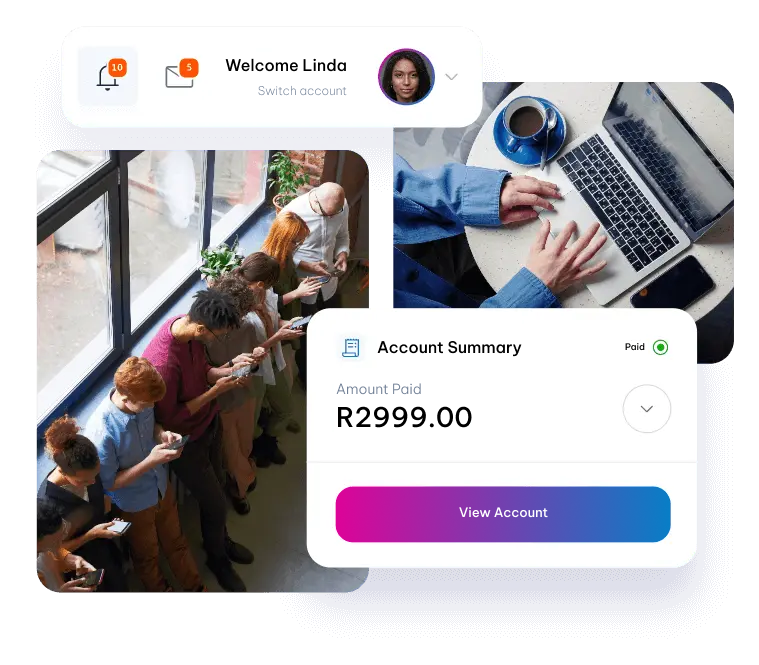Frequently Asked Questions
These abbreviations represent the different types of networks that the cellular carriers offer. Your phone can only connect to one network at a time, so whichever of these symbols that you see on the screen of your phone, that’s the network you’re currently using.
- E (Edge) or 3G are two earlier generations of cellular data. Someone connected to one of these technologies can expect internet connectivity but may experience issues streaming audio or video.
- 4G (HSPA+) is an enhanced version of 3G that was released to select carriers to increase data-speed (backhaul) using the same frequency space that 3G has occupied.
- 4G LTE is the most widespread network currently. Having a 4G LTE connection on your phone most likely indicates the capability to connect to the internet and stream HD audio or video.
- 5G is the newest cellular generation and is known for providing extremely fast data speeds and very low latency, which will enable new technologies, like remote surgeries, that have never been possible.
Both Yagi and Omni are outside antennas that pull in your existing 3G & 4G signals before sending them off to the amplifier to be boosted.
An omni antenna sends and receives in all directions at once, covering multiple networks, but is weaker than a Yagi antenna. In general, Omni antennas are all-around performers used in corporate offices, because they pull signal from a 360-degree field, which usually helps when boosting multiple carriers with cell towers in different locations. They are generally long rod-like cylinders.
A Yagi antenna sends and receives in only one direction for a specific network, so it’s the more powerful of the two. Directional antennas are specialised performers that pull in signal from a 45 to 90 degree directional field. The ability to focus on a narrower field allows it to reach farther than the omni and pull in more signal.
Directional antennas are very popular with people in remote, rural areas or any place with bad reception.
- Panel antennas are directional, which means that they focus most of the signal they broadcast in one direction, so the signal strength and coverage area in the direction that they are pointed is going to be high. Panel antennas are better at penetrating internal walls and floors because of their directionality.
- Dome antennas are omni-directional, which means that they will broadcast signal in all directions on the same floor with equal strength, and are designed to be mounted to a drop ceiling in the centre of the space that needs better signal. Since dome antennas are difficult to mount to a hard ceiling, they are more often used in professional installations in buildings or locations with an exposed ceiling.
- The A500 covers up to 500m2 (500 square metres) with up to +70 dB gain of power.
- The A1000 covers up to 1000 m2 (1000 square metres), with up to +74 dB gain of power.
A cell booster does not require an Internet connection to function. It only requires some existing outside cell signal to work, which it amplifies and then broadcasts to the inside area of the home or office that needs better signal.
- While a cell booster will significantly improve your cellular signal, it will not improve the WiFi for your home broadband Internet. Cell boosters are designed to work only on certain wireless frequencies that are used for cellular networks. Wi-Fi uses different frequencies, so it is not affected by a signal booster.
- If you’re using a wireless hotspot (MiFi, Jetpack, etc), then a signal booster will improve the data speeds that you’ll be receiving from the device, but it will not be able to increase the size of the area where you’re able to connect to the hotspot via Wi-Fi.
Unfortunately, cell boosters do not work on Fibre connectivity.
Cell boosters can cover both one (using a Yagi outside antenna) or multiple networks (using an Omni inside antenna), depending on your needs. We conduct a site survey to establish your requirements and whether the solution will be feasible.
Yes. However, multiple amplifiers and internal antennas would have to be installed for each floor of the building.
The cell booster equipment also comes with a lightning surge protector, which helps to prevent damage as a result of a lightning strike.
Unfortunately, we do not have outright purchase offers. We only offer rental terms of 12, 24 and 36 months. As a complementary SLA (Service Level Agreement), we also offer maintenance, repair and/or replacement of the equipment during the rental term. The risk of loss and/or damage, and the respective costs, in the Cell Booster equipment lies with you.
No. Cell Booster rentals are exactly that, a rental for a 12 or 24 -month term. At the end of the rental term, you can enter into a new agreement for an existing product, try another model, upgrade to a newer version (if available) or return the Cell Booster to Vox.
No, the antennas should not be painted as this can affect the signal strength. This is because paint generally contains metal.
Contact us for more
If you have any questions or need more information about our products, don’t hesitate to reach out to our support team. We’re happy to assist you with any queries.
General Account Queries
Logging a Service Request
Compliments & Escalations


Customer Zone
Customer Zone
Next-level self-service made easy.
Take control of your account and services with our Customer Zone.
- Explore our latest promotions
- Manage your account with ease
- Access invoices and statements conveniently
- Upgrade, downgrade or cancel your services
- Track your orders and deliveries
- Enjoy a range of helpful resources

